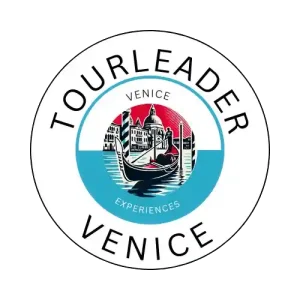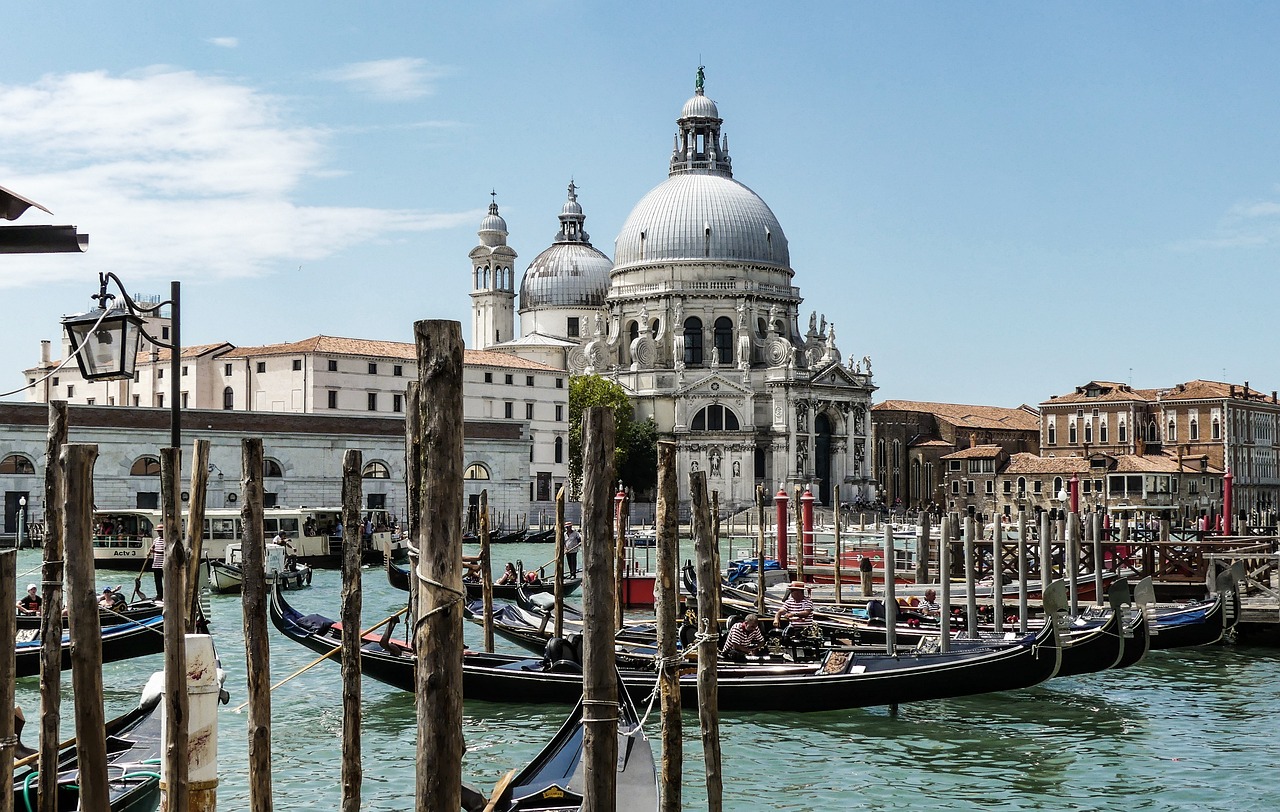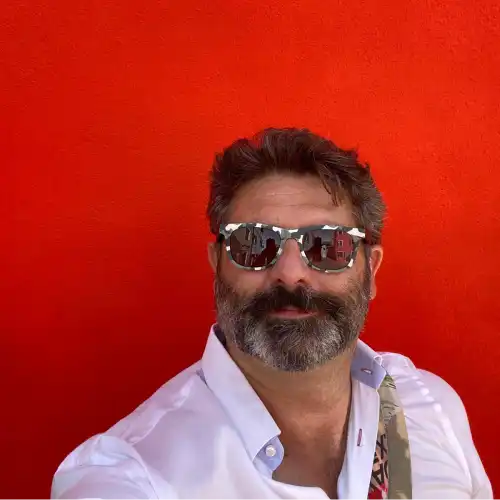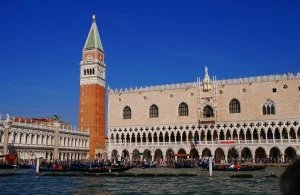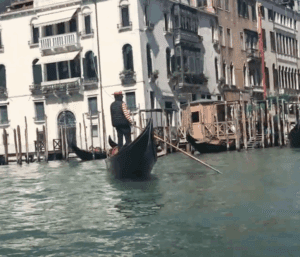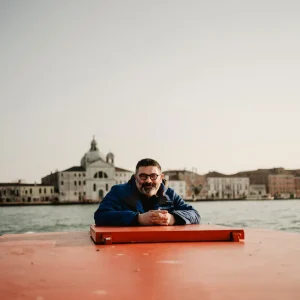Harry’s Bar Venice: The Story, the Legends, and the Magic Behind the Icon
Harry’s Bar Venice: The Story, the Legends, and the Magic Behind the Icon
There are places in Venice that feel like secrets whispered across centuries — and then there’s Harry’s Bar, where the city’s history, glamour, and soul come together over a single glass of Bellini. For nearly a century, this unassuming spot near St. Mark’s Square has been more than a bar; it’s been a stage where artists, aristocrats, and adventurers all played their part in Venice’s never-ending drama.
Founded in 1931 by the visionary Giuseppe Cipriani, Harry’s Bar is not just a place to drink — it’s a state of mind, a slice of la dolce vita that still beats with the heart of old Venice. This is the story of how a humble bartender, an American friend, and a simple idea gave birth to one of the most legendary establishments in the world.
💫 The Birth of an Icon
Like all great Venetian tales, the story of Harry’s Bar begins with friendship — and a bit of fate. Giuseppe Cipriani was a young bartender at the Hotel Europa, where he met a wealthy young American named Harry Pickering. Pickering had fallen on hard times after being cut off by his family, and Cipriani, moved by compassion, lent him 10,000 lire so he could return home. Months later, Pickering returned to Venice — not only to repay the debt but to give Cipriani 40,000 lire more to open his own bar.
“We’ll call it Harry’s Bar,” Pickering declared. And so, with a handshake and a shared vision, a legend was born.
The bar opened in a discreet corner near Piazza San Marco, inside a former rope warehouse. Cipriani had no sign, no ostentation — just impeccable service, fine ingredients, and genuine warmth. Word spread quickly. Venice’s elite gathered here, diplomats and dukes rubbed shoulders with painters and poets, and a small miracle happened: everyone felt at home.
🍑 The Bellini: Venice in a Glass
In the summer of 1948, Giuseppe Cipriani created what would become the most famous cocktail in Italian history: the Bellini. Inspired by the pale pink hues of Giovanni Bellini’s paintings, he mixed white peach purée with chilled Prosecco — and a legend was born.
The drink became a symbol of summer in Venice, a celebration of simplicity and perfection. Hemingway loved it. So did Truman Capote, Peggy Guggenheim, and the Duke of Windsor. It was said that no true Venetian afternoon began without a Bellini — and no romantic evening ended without one.
Even today, the bar’s staff insists on using only white peaches from the Veneto region, hand-pressed each morning. You’ll find Bellinis served around the world, but nowhere else do they taste like the ones made behind Harry’s marble counter, where time stands still and the prosecco bubbles tell stories.
🥩 The Countess, the Painter, and the Birth of Carpaccio
Another culinary miracle emerged at Harry’s Bar — one that forever changed Italian cuisine. In 1950, Countess Amalia Nani Mocenigo walked in with a problem: her doctor had forbidden her to eat cooked meat. Cipriani, ever the innovator, responded with empathy and imagination. He sliced raw beef paper-thin, drizzled it with a sauce of mayonnaise, Worcestershire, and lemon juice, and served it chilled. “What shall we call it?” someone asked. “Carpaccio,” said Cipriani — after the Venetian painter Vittore Carpaccio, known for his rich red tones.
Thus, a dish was born — refined, sensual, and distinctly Venetian. Today, Carpaccio is served worldwide, from Tokyo to New York, but its heart belongs to the tiny kitchen of Harry’s Bar, where a countess’s craving and a bartender’s genius created a masterpiece.
🌍 A Home for Artists, Writers, and Dreamers
From the moment it opened, Harry’s Bar became the beating heart of Venice’s cultural life. It was where Ernest Hemingway wrote, drank, and fell in love — not just with Venice, but with a local woman named Adriana Ivancich, his muse for “Across the River and Into the Trees.”
Hemingway had his own table, near the window, where he’d nurse a whiskey and soda and talk for hours with fishermen, aristocrats, and soldiers. When his bill grew too long, Cipriani simply smiled and said, “Pay me when you can.”
Other regulars soon joined the cast: Charlie Chaplin with his graceful walk and melancholy charm; Orson Welles, booming laughter echoing off the bar’s wooden panels; Truman Capote sketching characters on a napkin; Somerset Maugham reading proofs between sips of grappa. Later came Woody Allen, George Clooney, Sophia Loren, and Nicole Kidman — proof that true style never goes out of fashion.
“Harry’s is like Venice itself,” wrote Hemingway. “Eternal, patient, and a little drunk.”
🕰️ The Atmosphere: Where Time Never Changed
Step inside, and you’ll see what he meant. The bar’s interior has remained almost identical since 1931 — small, elegant, timeless. The ceilings are low, the waiters still wear crisp white jackets, and the chairs are made of polished cherrywood. There are no chandeliers, no gold leaf, no excess. The beauty lies in restraint — a reflection of Venetian sophistication at its finest.
The light through the windows shifts with the lagoon’s mood — soft amber in the morning, silver at noon, and golden in the evening. From the bar, you can see gondolas gliding past the Bacino di San Marco. It’s impossible not to imagine the ghosts of writers and lovers who once sat where you sit, raising a glass to the same sunset.
🎬 Harry’s Bar and the Silver Screen
Over the decades, Harry’s Bar has made appearances in countless films, novels, and love letters to Venice. It inspired scenes in movies like The Tourist (with Angelina Jolie and Johnny Depp), Everyone Says I Love You by Woody Allen, and even Dangerous Beauty, which portrayed the seductive allure of Renaissance Venice.
Directors and actors often escape to Harry’s between takes — drawn not by fame, but by familiarity. “When you walk into Harry’s,” said Al Pacino during a film shoot, “you feel like the city just gave you a hug.”
The bar also remains a magnet for the fashion world. Valentino Garavani hosted private dinners here; Anna Wintour toasted the opening of the Venice Biennale with a Bellini in hand; and Tom Ford famously declared Harry’s his favorite place to “think about new ideas in old settings.”
🎨 A Living Museum of Venetian Craftsmanship
Everything in Harry’s Bar tells a story. The glasses, still blown in Murano; the silver trays engraved with the Cipriani crest; the linen napkins embroidered by Venetian artisans. Even the bar counter — polished and worn smooth by generations of hands — feels like a relic of another age.
Giuseppe Cipriani believed that service was an art form. “We are not waiters,” he once said, “we are hosts.” To this day, the staff greets every guest as if they were returning home. Many have worked here for decades, serving the grandchildren of their first customers. It’s that continuity — that deep Venetian sense of belonging — that gives Harry’s Bar its soul.
🍽️ The Menu: Simple, Honest, and Perfect
Ask any Venetian and they’ll tell you — the menu at Harry’s hasn’t changed much in 90 years, and that’s exactly the point. The Carpaccio remains the star, of course, but the tagliolini gratinati (oven-baked pasta with cream and parmesan) is divine. The risotto primavera is light as air, and the veal Milanese remains a favorite among locals and celebrities alike.
For dessert, order the meringata — a Cipriani classic of whipped cream and crushed meringue — or the zuppa inglese, an Italian trifle with custard and sponge soaked in liqueur. Pair it all with a chilled glass of Prosecco Superiore DOCG from the Asolo Prosecco Hills, and you’ll understand why Harry’s has never needed to reinvent itself.
As Cipriani once said, “Perfection is when there’s nothing left to take away.”
🕯️ Wartime Shadows and Postwar Glamour
Even legends face dark times. During World War II, Harry’s Bar was forced to close when German troops occupied Venice. The Cipriani family fled, and the building was requisitioned. Yet as soon as peace returned, so did the spirit of Venice. In 1946, Giuseppe reopened the bar — a symbol of resilience and renewal — and the city flocked back, thirstier than ever for life, laughter, and Bellinis.
By the 1950s, Venice was buzzing again. The film festival on the Lido brought stars like Humphrey Bogart, Ingrid Bergman, and Elizabeth Taylor to the lagoon, and all roads (and canals) led to Harry’s. It became the unofficial after-party of the Venice Film Festival, a glittering salon where Hollywood met la Serenissima. Gossip, romance, and intrigue filled the air — and every corner had a story to tell.
💎 The Cipriani Legacy: From Venice to the World
Giuseppe’s son, Arrigo Cipriani (whose name translates to “Harry” in Italian), inherited his father’s passion and perfectionism. Under his guidance, Harry’s Bar evolved from a Venetian institution into a global symbol of Italian elegance. Cipriani restaurants and hotels now span the world — from New York to Hong Kong, Monte Carlo to Miami — but the Venetian original remains the crown jewel.
In 2001, the Italian Ministry of Culture declared Harry’s Bar a national landmark, recognizing it as a site of “historical and artistic importance.” It remains the only bar in Italy with that distinction — a fitting tribute to nearly a century of excellence.
Arrigo, now in his nineties, still visits regularly. His handshake is as warm as his father’s, his eyes as sharp, and his love for Venice as deep as ever. “We didn’t invent luxury,” he likes to say. “We just made it human.”
💬 Insider Tips for Visitors
- Reservations: Harry’s Bar doesn’t take online bookings. Arrive early, especially in the evening, or visit for lunch to avoid the rush.
- Dress Code: Smart casual is best — no shorts or flip-flops. Remember, this is a place where style is part of the experience.
- What to Order: Start with a Bellini, follow with Carpaccio or tagliolini gratinati, and end with meringata. If you’re feeling adventurous, ask for the Montenegro Spritz — a Venetian twist on tradition.
- Best Time to Visit: Late afternoon (around 5 p.m.) when the golden light hits the canal and the mood turns magical.
- Souvenir: You can buy original Cipriani products — including their signature pasta and Bellini mix — at the nearby Venice Food Tour stops or at the Cipriani shop itself.
🌇 A Timeless Venetian Ritual
To visit Harry’s Bar is to step into a ritual older than memory. You sit, you sip, and the city reveals itself — the elegance, the melancholy, the laughter echoing from another age. Around you, a quiet ballet unfolds: waiters moving with the precision of gondoliers, silver trays gliding like boats, and the gentle murmur of languages from all over the world.
Outside, Venice glitters — its reflections shifting like champagne bubbles. Inside, Harry’s remains what it has always been: a home for those who love beauty, conversation, and the art of doing nothing — beautifully.
🍑 Experience the True Spirit of Venice with Tour Leader Venice
✨ Conclusion: A Living Legend
Harry’s Bar is not just a restaurant or a piece of history — it’s Venice distilled into a single place. It’s the laughter of Hemingway echoing through the years, the elegance of Sophia Loren at the corner table, the sweetness of the first Bellini of summer. It’s where art, love, and life meet — not on a canvas or a stage, but around a small round table overlooking the Grand Canal.
So the next time you find yourself in Venice, follow the curve of the canal, slip past the crowds of St. Mark’s, and push open the unmarked door on Calle Vallaresso. Inside, you won’t just find a bar — you’ll find the heartbeat of a city.
🍸 Book Your Culinary Adventure in Venice
FAQs
Where exactly is Harry’s Bar in Venice?
Harry’s Bar is located just a few steps from Piazza San Marco, at the corner of Calle Vallaresso overlooking the Bacino di San Marco. Despite its fame, it remains discreet — there’s no grand sign outside, only a small brass plaque marking the entrance to one of the world’s most legendary bars.
What should I order at Harry’s Bar?
Start with the Bellini, invented here in 1948 by Giuseppe Cipriani — a perfect blend of fresh white peach purée and Prosecco. Then try the Carpaccio, also created at Harry’s, followed by the signature tagliolini gratinati or veal Milanese. For dessert, the classic meringata is a must.
Do I need a reservation or dress code to visit?
Reservations are not required, but recommended at peak hours (especially evenings and during the Venice Film Festival). The dress code is smart casual — avoid shorts, flip-flops, or beachwear. Harry’s Bar isn’t just a place to drink; it’s a Venetian institution where timeless style and good manners are part of the experience.
